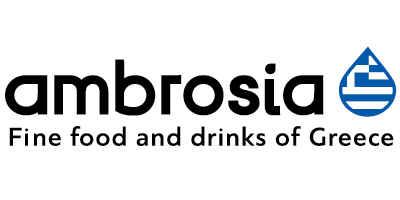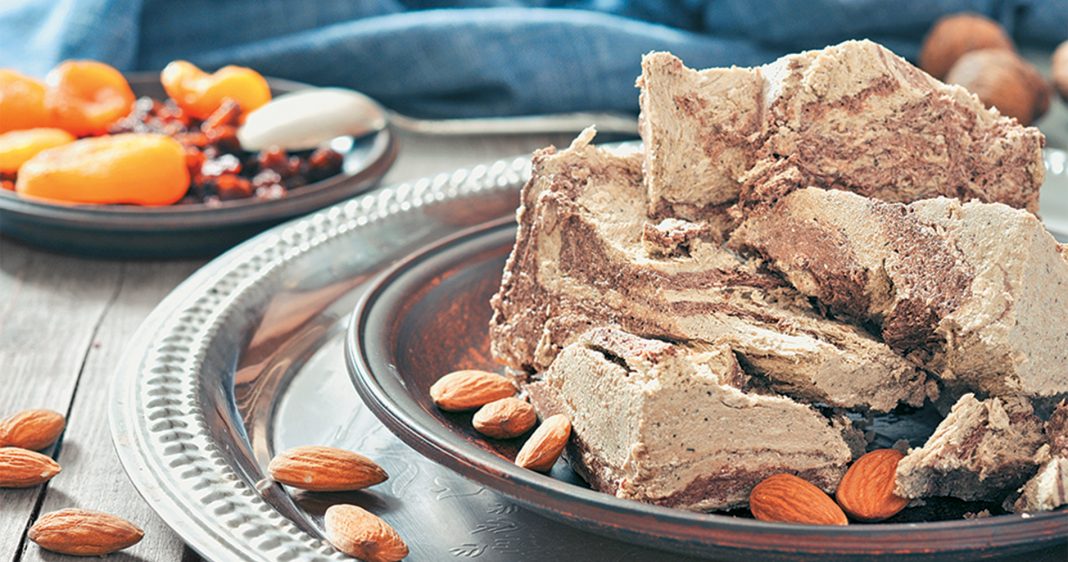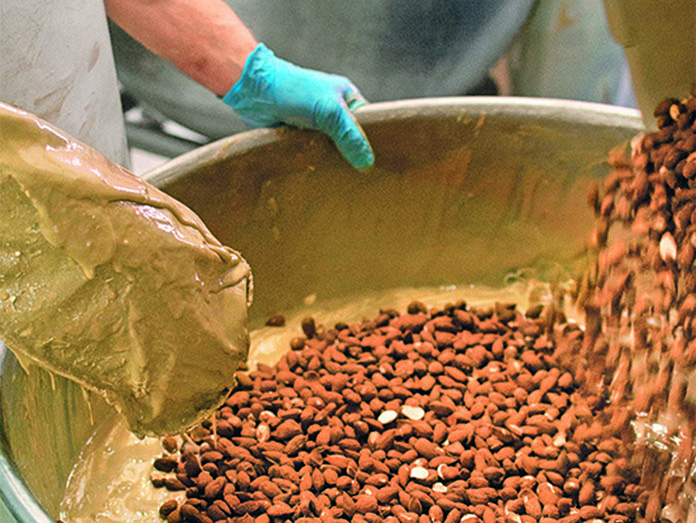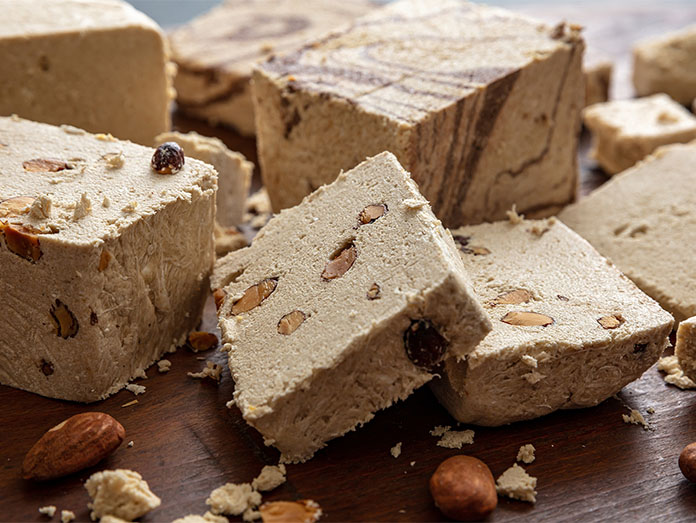The history of halva spans millennia and continents – it is served across South and West Asia, North Africa, the Balkans, Eastern Europe and the Jewish world.
According to the legend, this delicious sweet was born in the East in the court of a Persian king, and travelled from Turkey to Syria, to Lebanon, to the Gulf States, to India and Greece around the late 12th century. One of halva’s most prominent enthusiasts was the Ottoman Empire’s longest-reigning sultan, Suleiman the Magnificent, who had a special kitchen built next to his palace that was dubbed the “helvahane” (house of halva), where some 30 varieties of the confection were produced! Nowadays, in Greece there are at least six types of halva, the most popular being the one made with tahini (sesame pulp).
The two – ingredient miracle
The making of halva is a delicate process that employs both traditional techniques and top notch technologies to create its unique texture and mouth-watering flavor: One part cottoncandy airiness, one part dense fudge, not exactly sweet and not savory either, that makes it so addictive.
Halva consists of two basic ingredients: tahini (sesame pulp) and some kind of sweetener, such as sugar, honey, glucose syrup, fructose or carob syrup. The ground sesame pulp (tahini) is collected in special large bowls, while, at the same time, the sweetener is melted in high-tech syrup tanks until all humidity is evaporated and the caramel is formed. Once ready, the caramel is then combined with the tahini and hand-mixed by master-craftsmen following the traditional recipe.
Mixing the halva is a difficult kneading process: the dough is extra hot (the temperature is around 80°C), and the quality of the final product relies on the deftness and patience of the artisan. In this phase, the mix is enriched with other ingredients such as almonds, pistachios, cocoa, vanilla, mastiha, etc. to acquire a distinctive flavor, and, while still warm, is placed into molds.
During the final preparation phase, halva is packaged using fully-automated packing machines, which guarantee its freshness and ensure the safety of the final product without the addition of artificial preservatives – in fact, sugar and honey are 100 percent natural preservatives. Finally, the packages are stored until they are ready to be shipped all over the world. Because of the natural antioxidant sesamol contained in tahini, halva has at least 3 years shelf life without losing its flavor or texture.
Halva all over the world
Halva continues to win over new fans and cross boundaries, especially as consumers are realizing the nutritional value of tahini and, in consequence, halva, and have started incorporating it into their daily diet. As a result, the famous sweet is shipped to over 50 countries around the globe. From the EU and the Balkans to the US, to Canada, and Australia, halva is a first class ambassador of traditional Greek products and food.
For Greeks, halva is one of the characteristic Lenten sweets, although, nowadays, it is consumed all year round. Consequently, halva production has increased, especially since exports are also on the rise.
In Greece there are many family owned artisan businesses, producing delicious yet small quantities of halva that reach the most discerning clientele through specialty and delicatessen stores. There are, however, a few major companies with the necessary infrastructure to accommodate large orders from all over the world, thus shipping halva to super markets and c-stores without making allowance for quality. In their state-of-the-art facilities, halva production takes place with the help of high tech machinery without, at the same time, foregoing the human factor that ensures the top-tier quality of the final product. In these technologically-advanced production units tradition and quality is upheld by respecting the superior nature of the ingredients used, while complying with food safety standards.
New flavors
Although halva has high levels of fat and carbohydrates, its sesame seed base endows it with nutritious minerals, including copper, manganese, calcium and magnesium, and with at least 17 amino acids. Halva companies are constantly developing new, exciting flavors to entice a younger generation of customers. Cocoa and chocolate, almonds, pistachios, walnuts, mastic (namely from Chios Island), etc., from whole wheat sesame or with chocolate coating, and many more varieties are competing for the palate of an international clientele with discerning tastes. The result is a product of superior quality and flavor that can serve the needs of a wide costomer base, from diabetics to dieters to gourmet enthusiasts.
Resources
Papayannis Bros
Argoudellis
Halvas Drapetsonas
Macedonian Halva





















